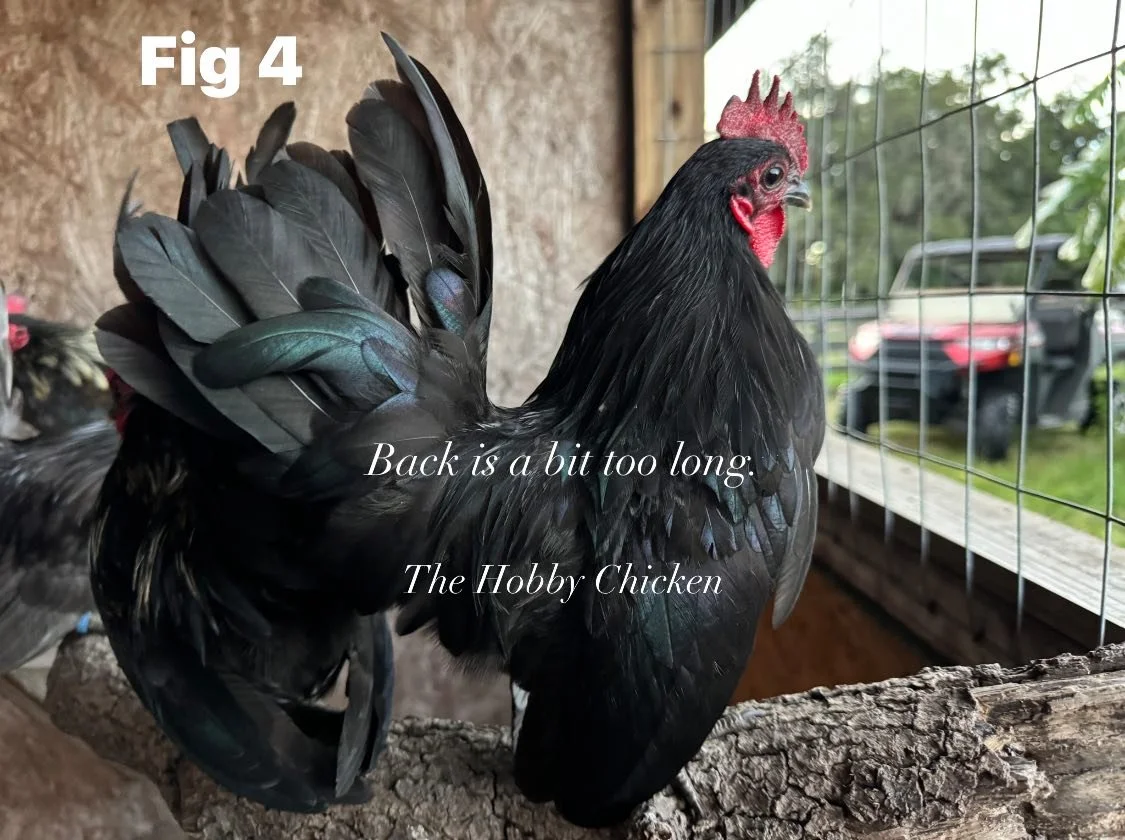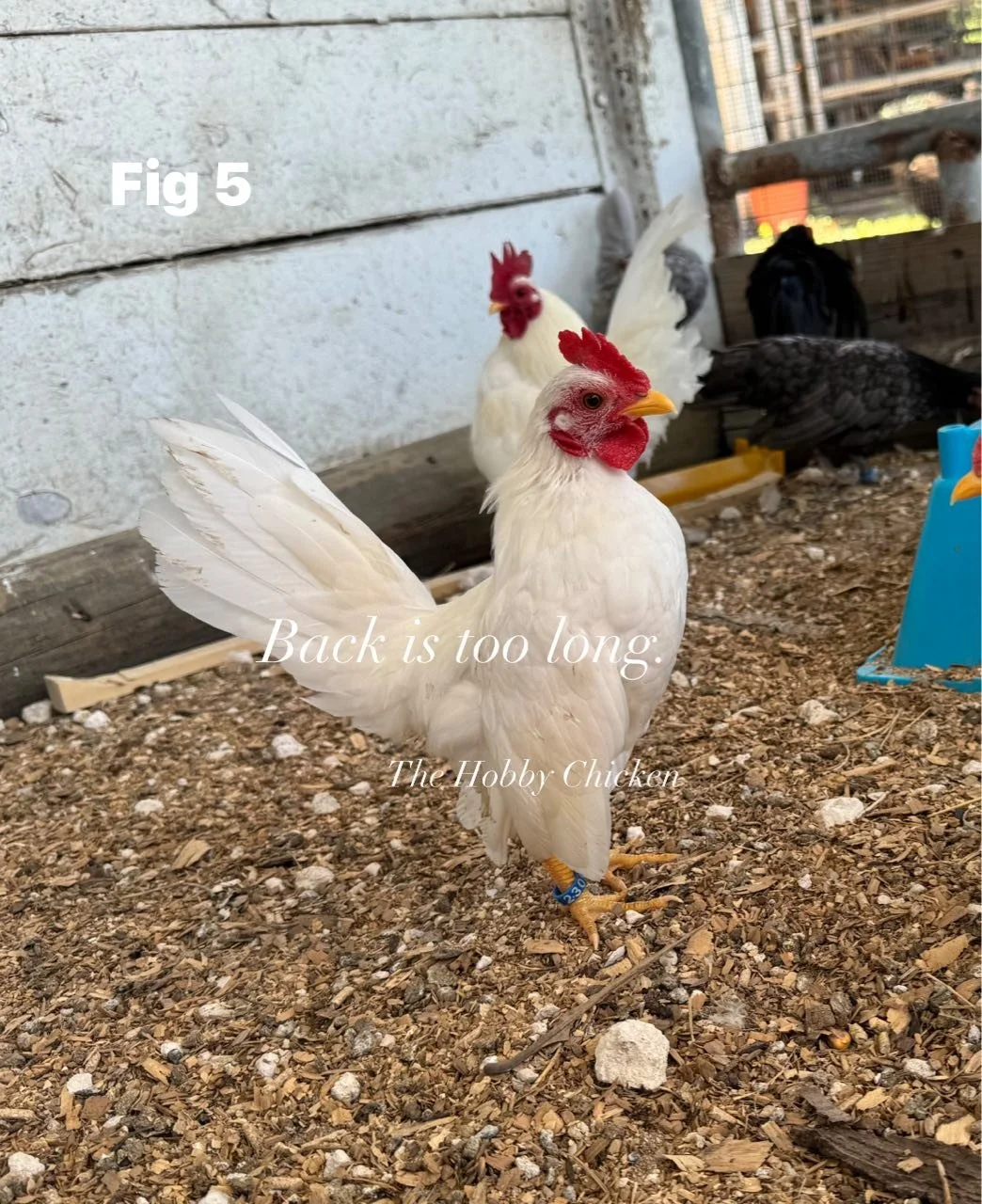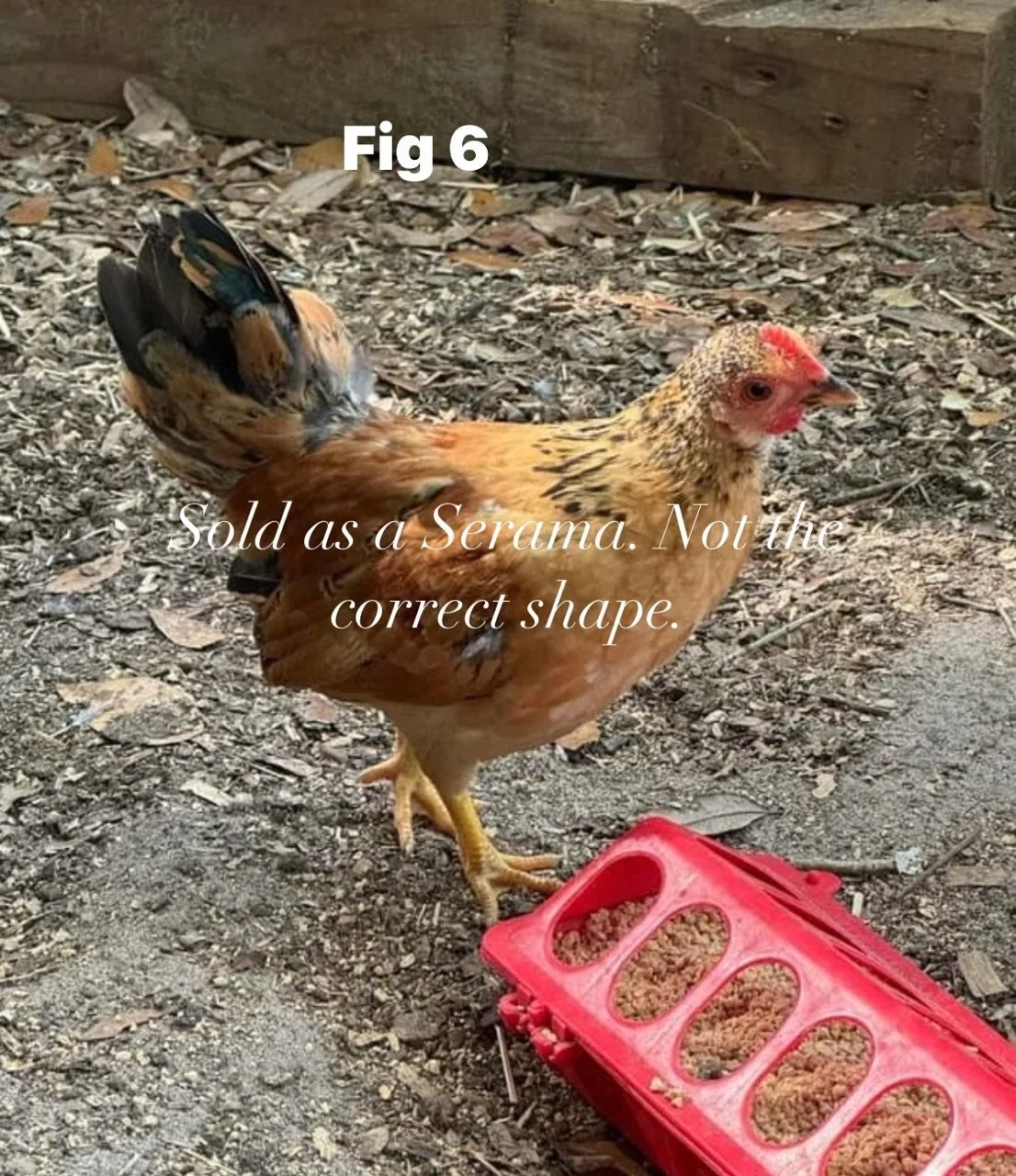Serama Series 2 - Shape
Continuing the Serama series, I’d like to include an excerpt that applies when evaluating Serama—or any other breed of animal. “Shape makes the breed…” If the shape is not there, neither is the breed.
This time, we’re focusing on the back in relation to the tail and the base of the neck. A Serama is a very upright breed, and in order to achieve that stance, it must have a short back. With a longer back, the bird takes on a more horizontal appearance.
Figure 1: This pullet resembles an Old English Game Bantam more than a Serama. She has a very long back, the tail angle is incorrect, and when asked to stand upright, she simply can’t. Remember: “Shape makes the breed.” This is not a Serama—it’s a bantam.
Figure 2: This pullet shows the short back that defines a Traditional or American Serama. She stands vertically, with no space between her tail and the base of her neck.
Figure 3: A pullet with a very nice tail, though her back is just a bit too long.
Figure 4: A cockerel with too long of a back. That back will never shorten.
Figure 5: Another cockerel with a back that is far too long.
Figure 6: A bird that was sold as a Serama but does not have the correct shape.
Figure 7: This cockerel has an extremely long back—far beyond what is acceptable. No amount of development will fix that. Again, this is a bantam, not a Serama.
Figure 8: A young chick already showing the proper Serama shape. This little male has gone on to ribbon many times.
Figure 9: A cockerel that was sold as “breeder quality”but his back is very long and he lacks the correct shape.
Figure 10: This is the ideal American or Traditional male—short back, upright stance, and everything in correct proportion.
Check out the other articles in the Serama Series:











